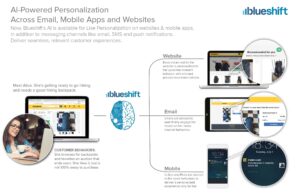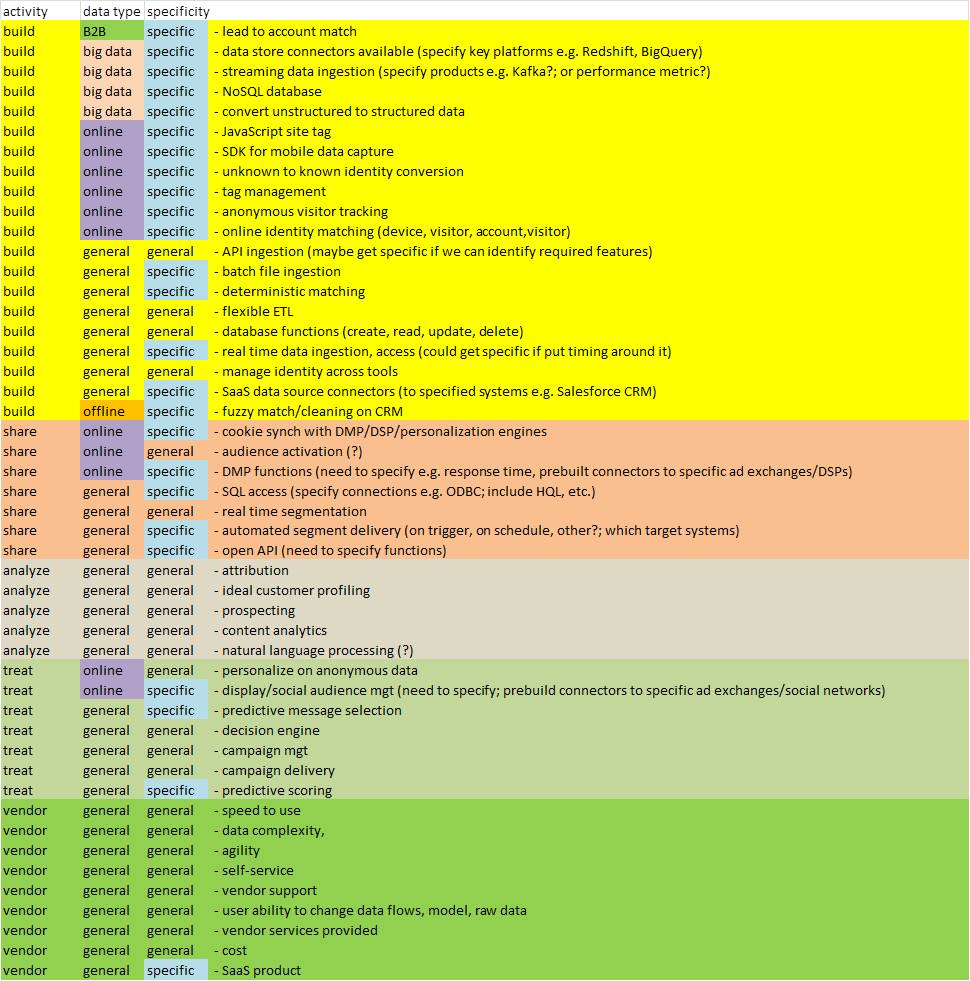Achieving True Cross-Channel Personalization: “Live” & “Push” Channels
September 19, 2017Customer Data Platforms are the key to achieving Cross-Channel Personalization and Orchestration. One of the key roles of CDPs is to help unify customer data from multiple silos, and create a living breathing customer profile. An equally important role is to enable marketers to “activate” that data, in the form of personalized campaigns across all channels.
As we think harder about this opportunity for true cross-channel personalization, we must keep in mind that marketing channels come in two flavors:
- “Push” Channels: This includes channels like email, direct mail, SMS and app-notifications. The interaction is asynchronous, where the customer may open or view the message at a different time than when it’s “served” or sent. The number of “sends” per customer is typically limited to a handful or less per day across all the messaging channels. Most Push Channels involve known customers, albeit with different identifiers (email addresses, device tokens, phone numbers or mailing addresses). The customer identifier remains largely static over time.
- “Live” Channels”: This includes owned channels like your website, in-app content, as well as paid channels like Display Advertising or Facebook. These channels are synchronous in their interaction, and the content is consumed as it’s being served. The volume of impressions on Live channels can be huge for highly interactive sites: customers might consume tens of page views in a single session. On owned Live channels, customers may go back and forth between between being known (logged in) and anonymous. The anonymous behavior could extend across multiple browsers, and cookies could change over time. On Paid Live Channels, identifiers have to be synced with 3rd parties who own the media inventory, or with middlemen in the ecosystem.
Traditional Barriers to Cross-Channel Personalization across Push & Live
There are some key differences in how these channels operate, creating barriers to true Cross-Channel personalization:
- Organizational: Typically, ownership of these channels is split between multiple teams. The Push Channels are the responsibility of a “CRM” team or equivalent. This team almost always belongs in the marketing organization. The Paid Live Channels are typically the responsibility of a Media Buying team, also within the marketing organization. However, the Owned Live Channels (websites, apps) are typically the responsibility of a Product team with some input from Marketing. ►Because of these organizational differences, teams typically end up using technologies with different views of customer data.
- Technology: Given the synchronous versus asynchronous nature of the channels, the different identifiers, as well as the different latency and throughput requirements, the technology required for these channels is often different. ►Because of these technology differences, legacy applications have typically served only one type of channels (either Live or Push), not both, further accentuating the silos.
The holy grail for cross-channel personalization is to place the customer at the center of the experience. In order to enable this, CDPs must not only unify customer data and customer identity, but also break the mold of legacy applications in being able to serve both Live and Push use cases.
A New Architecture for Cross-Channel Personalization
Unlike legacy applications, the key to achieving this holy grail is a micro-services based technology architecture that can both consume fast streams of data, as well as enable high velocity personalization. Each micro-service could then be optimized for its needs (e.g. low latency, high throughput) using a custom data store that best fits the needs. The micro-services would interact with each other to ensure that every element of customer experience is personalized using the full 360-degree view of customer data.
- The core cross-channel pieces of personalization, including “segmentation”, “dynamic content”, “content recommendations”, “measurement and attribution” each deserve their own micro-services optimized for the separate needs.
- The campaign execution framework would consist of a set of separate micro-services, optimized for Push and Live channels.
That is why we are excited to announce today that Blueshift’s CDP is adding support for Live Personalization in addition to Push Channels, enabled by a modern architecture. Blueshift customer Tradera, a division of Paypal, has seen significant advantages in using unified customer data & AI on websites & apps in addition to using it on Push marketing applications (email, mobile app notifications and SMS). “Blueshift has really changed how our marketing team as well as our entire company as a whole work – now we are able to create real value for our customers and business rapidly”, said Ferraud Norberg, head of marketing at Tradera.

Additionally, Tradera has seen substantial lift in revenue and conversion rates with Live Personalization, according to Norberg. Compared to previously deployed versions of manually recommended content, clicks per session was up 80%. Out of all sessions ending in a click on the recommended content, gross sales (GMV) per session was up by 125%.
Cross-channel personalization is no longer a pipe dream. Modern architectures and AI-Powered personalization make it a reality.


